A brief history of discrete multimedia audio cards
Introduction
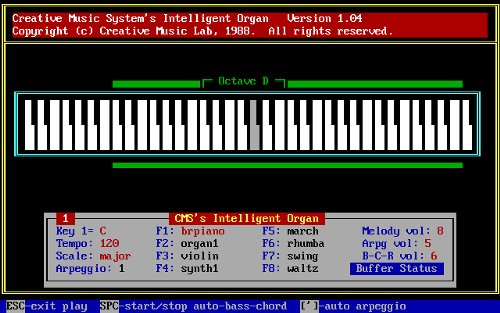

As a person who has not finished the philharmonic society, I am always a little shy and worried when I talk about my hobby - listening to music and sounds. Hmm, “listening to the sounds” sounds probably ridiculous and unicorny, but what to do is true, the music is full of sounds and effects for me as a site full of cats. And probably, someday it will lead to a protracted zadrotstvo, but while I feel still somehow adequate, I would like to share with you my article about the history of consumer sound cards. I hope you will be interested as I did when compiling!
History of discrete audio cards
Grandpa speaker
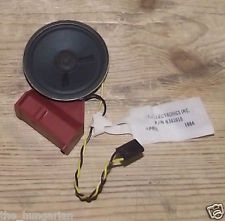
')
No matter how you feel about embedded audio, there’s one thing that always forces you to reckon with yourself - this is the speaker. The speaker was originally created exactly for the same tasks for which it is used even now - error notification. Its capabilities are not thick - one tone per beat, but even that was enough for game developers to realize their fantasies by limiting themselves only to its use.
1986 Covox Speech Thing


The thing that attracts attention is one of its kind. Being the simplest 8-bit digital-to-analog converter (DAC), the device outputs sound ... From the printer port! Despite such a specific principle of operation, the device enjoyed considerable demand due to its low price (about $ 70). Due to the simple scheme of work and low cost of manufacture, the craftsmen managed to quickly start the handicraft production of such devices, making their own improvements. Covox even sold the Disney company.
1987 Creative Music System


And here is something more similar to the audio card, which is usual in our understanding. This is the very first sound card at that time absolutely unknown to Singapore’s Creative company. A feature of the CMS was the involvement of as many as two 6-voice synthesizers Philips SAA 1099 (visible in the photo under the label CMS-301), on the right and on the left channel, respectively. Real stereo, it turned out richly, which is to say. But it was precisely the high price (about $ 300), as well as the growing competition from one more player, whom we’ll review below, didn’t let Creative come to take its place under the sun.
1987 AdLib Music Synthesizer Card


Exactly that year, when Creative launched its audio card, another company entered the market - Ad Lib Canadians, with its AdLib Music Synthesizer Card product. If we compare it with the competitor map given above, we can see that Canadians decided to refuse stereo, but they chose a more powerful 11-voice Yamaha YM3812 sound generator, which managed to achieve both a good price (about $ 100) and better sound quality. For the next couple of years, the AdLib card has become the de facto standard; you can familiarize yourself with its sound in the online archive .
1989 Sound Blaster
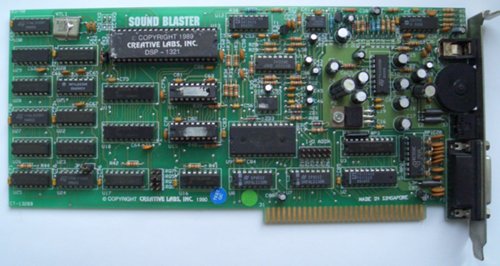

Appearance inspires, right? Creative had to accept in its Sound Blaster card that the standard of sound on the market had already been set by AdLib, so for compatibility with the board, the same Yamaha YM3812 synthesizer was placed. In addition, the card is also compatible with the previous Creative product - CMS, which led to the need to solder chips and under it (support for CMS is still dropped in revision 1.5, a year later). The revolutionary card is primarily the fact that in the previous two cards under consideration, the sound was created by means of fm-synthesizers (Philips or Yamaha), it was suitable if the computer only needed to play 8-bit music, but to play the voice needed DAC. Sound Blaster had an integrated microcontroller from Intel, which Creative called the DSP - Digital Sound Processor (a more general concept than the Digital Signal Processor, and in general marketing from Taiwanese). DSP made it possible to achieve a mono sample rate of 22 kHz while listening (FM radio quality), and a frequency when recording at 12 kHz.
Another pillar of the success of the card was that she had a game port on board. Usually computers of that time were deprived of it, and therefore often had to think about buying a separate card with it. Creative allowed users to save an extra expansion port, while not greatly increasing the price of their audio card (after many years they did the same trick with FireWire).
Since the launch of Sound Blaster, nobody else thought about purchasing an AdLib product, and the very phrase Sound Blaster has replaced the word “audio card” for many years. The Sound Blaster card series was consistently developed until 1998, the sampling rate increased, the characteristics of the fm synthesizer improved, Creative worked closely with Microsoft to develop DirectSound.
1997 Diamond Monster Sound MX300


So, the beginning of the 90s brought the sound reproduction on the computer to the level of a good CD player, but this was not enough. All the time, the development of computer audio cards was mainly driven by computer games, and the second half of the 90s was marked by the next round of sound development in games - the era of 3D was approaching, both in graphics and in sound. The DirectSound 3D standard was introduced as an extension to Direct X 3, but did not represent anything serious. Quite another thing - the technology A3D, developed by Aureal and allows you to achieve the effect of three-dimensional sound when using headphones, 2, or 4 speakers.
The Vortex chipset (AU8820) was responsible for implementing the A3D technology, but Aureal did not release sound cards itself, outsourcing it to third-party companies, as is the case with video cards. You can read the old detailed review of the Diamond Monster Sound MX300 board shown here on IXBT .
In conclusion, we say that the fate of Aureal has developed tragic. In 1998, Creative filed a lawsuit against them for patent infringement, for which Aureal filed a response lawsuit, and in 1999 successfully won it, but legal costs drove the company to the bottom. In 2000, she bought Creative, along with all the patents and trademarks, burying them forever.
1998 SB Live!
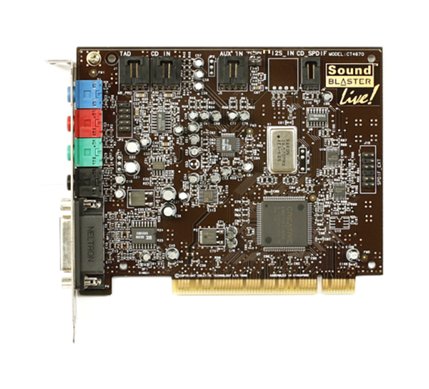

But one should not assume that Creative rested on its laurels and only pressed competitors with patents (although they defended intellectual property rights with a decent portfolio, with a rush). Back in 1993, Taiwanese acquired a well-known manufacturer of synthesizers and samplers - the company E-mu, however, leaving them with plenty of autonomy. E-mu was presented to the SB Live! Sound card, released in 1998, with a completely new full-fledged sound processor - EMU10K1. EMU10K1 included a high-quality 64-voice wavetable synthesizer and a digital processor FX8010 for applying effects to the audio stream in real time, which managed to win the hearts of people using a computer for musical experiments.
The decision to abandon the memory placement on the board itself, using the system memory instead, made it possible to achieve a card price of just $ 100.
But, as we have already stipulated, the sound is moved primarily by games, and for gamers at Creative, something was in store, namely, EAX (Environmental Audio Extensions).
EAX was an add-on to DirectSound 3D, allowing developers to easily create a surround sound effect using up to eight sound streams at the same time and support for 26 different sound environments. In the version of EAX 2.0, the number of threads increased to 32, moreover, there was no need to buy a new card.
2002 Creative Audigy 2
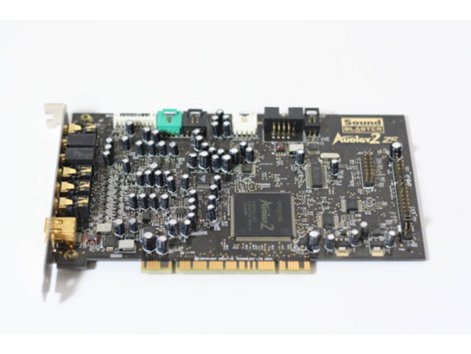

We missed the first Audigy card in this review, as it was characterized primarily by the development of EAX technology, which we have already talked about, as well as by the new audio card bundling scheme: now several bundles with various additional external components are sold, the audio card is now positioned not just for the gadget A gamer, but a serious device for music lovers (more serious than even a domestic player).
And now let's take a look at Audigy 2. Why is this map interesting? The fact that it starts supporting audio playback in 24-bit @ 192 kHz format, that is, DVD-Audio. This format has introduced many into the confusion - does it have any real meaning for the listener, or is it a joy for audiophiles only? The physical media DVD-Audio was not able to achieve the low popularity of Audio-CD, and the mp3 epoch reigned in the yard. Now recordings in the 24/192 format is usually an amateur digitization of vinyl records, which perhaps gives reason to imply that the answer to the above question will not be in favor of the ordinary listener.
A good overview of the technology of this sound card can be read at Ferra .
PS Thanks for the tip on the review from "16 bits ago" to users of Newbilius and Mercury13.
Source: https://habr.com/ru/post/203538/
All Articles